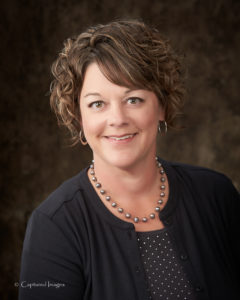
District Extension Agent, Horticulture
Southwind Extension District
111 S. Butler
Erie, KS 66733
Office: 620-244-3826
Cell: 620-496-8786
Although many gardens are still producing, it is time to get our fall vegetables planted. Believe it or not, fall is a great gardening season!
When you think about it, fall weather is much like spring – warm daytime temperatures and cool nights. Rainfall is typically more abundant in the fall than summer so less irrigation is needed and fall gardens often have fewer insect pest and disease problems. Combine all of these and you have the ingredients for a great garden! And of most importance is the taste of the produce grown. Flavors of fall-grown vegetables are often sweeter and milder in taste than those grown during hot summer weather.
Some of the best vegetables for a fall garden are lettuce, spinach, radishes, beets, cabbage, turnips, and carrots because of their frost tolerance. These vegetables can be planted directly into your garden wherever space can be found – next to plants still growing in the garden like tomatoes, cucumbers, and pumpkins. Plant mid-August until the first week of September.
Left-over seed from spring planting can be used as long as it was stored in a cool, dry location. To speed up germination and seedling emergence, soak the seeds overnight before planting. If you are purchasing new seed, look for the shortest season cultivars that you can find to insure harvest before a killing frost. The average fall freeze date for our area is around October 24 according to the Weather Data Library on the K-State campus.
Sometimes establishing a fall garden can be difficult during the summer when soil temperatures are extremely high. One way to avoid this is to establish plants in containers or pots for transplanting into the garden later in the season when the weather begins to cool. Cabbage, broccoli, cauliflower, and collards can be grown in cooler protected areas for 2-4 weeks prior to setting in the garden. Be sure to acclimatize crops for several days before transplanting directly into the garden.
Garden soil should be prepared just like for spring. An application of fertilizer will probably be necessary for optimum plant growth. Use one pound of a complete analysis fertilizer, such as 12-12-12, applied per 100 square feet of garden area. Weeds and grasses will also grow well in a fall garden so mulching may be warranted.
If you do not have a traditional garden space, think about doing a container garden. Just about anything that will hold soil and have a drain hole in the bottom can be used.
Everyone gets geared up to plant vegetables in the spring, but the fall season offers many benefits to gardening. Few take advantage of the season, but consider giving it a try this year.
The Extension office has the “Vegetable Garden Planting Guide” publication available free of charge. This guide offers information such as days to first harvest, days to germination, planting depth, frost resistance, and more.
Krista Harding is a K-State Research and Extension Agricultural agent assigned to Southwind District. She may be reached at [email protected] or 620-244-3826.
K-State Research and Extension is an equal opportunity provider and employer.